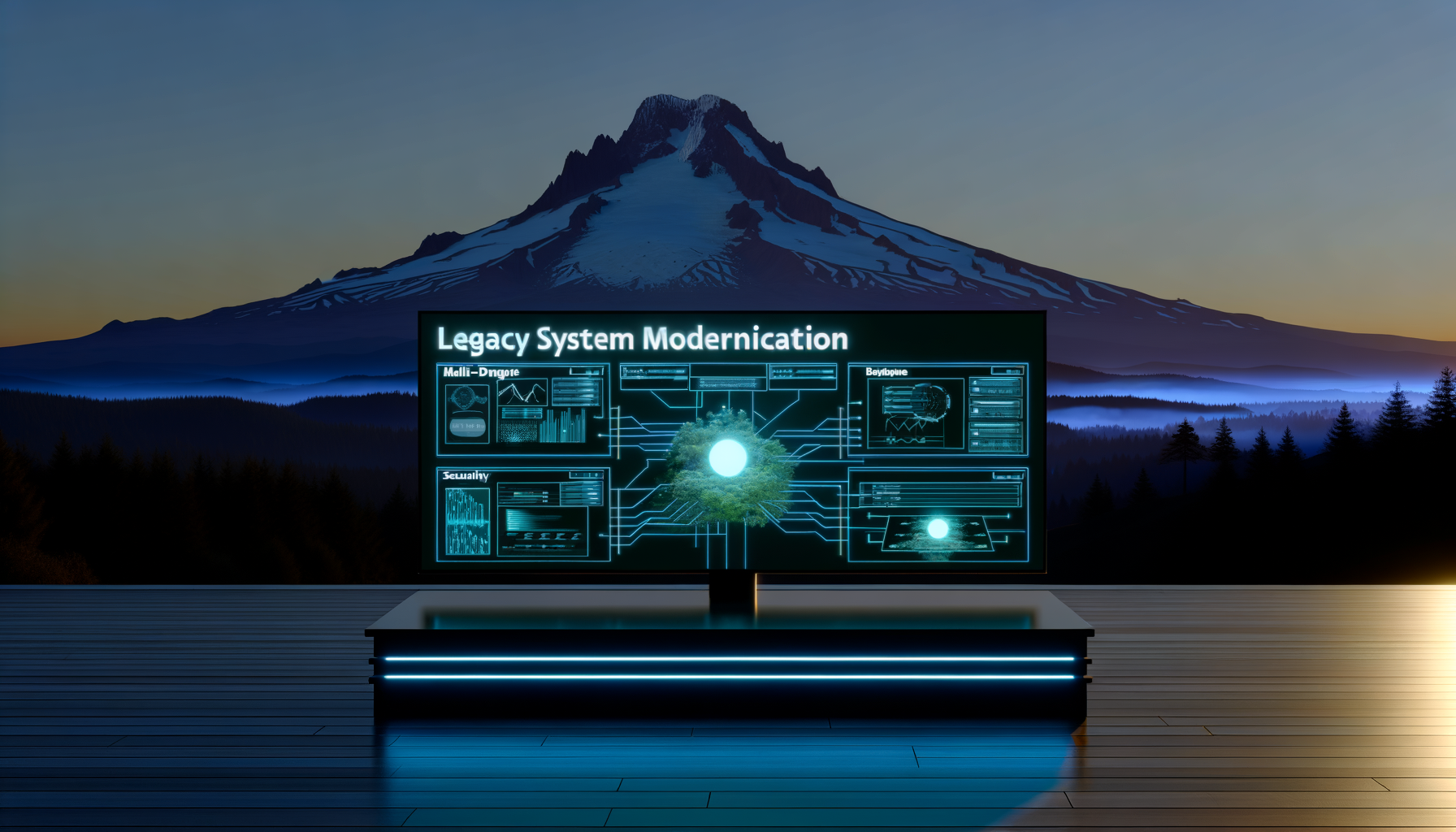Is your legacy system a ticking time bomb or a launchpad for innovation? In today's digital age, businesses can't afford to lag behind due to outdated infrastructure. As we step into 2025, the modernization of legacy applications isn't just a technological upgrade—it's a strategic imperative. Through AI, cloud-native solutions, and modern development methodologies, you can transform your legacy systems into agile, efficient engines of growth. Here’s how you can embark on this transformative journey with confidence, leveraging the expertise of Quicklook.
Understanding the Legacy Landscape
The Hidden Costs of Outdated Systems

A team conducting a code-review collab over legacy system architecture.
Legacy systems often come with hidden costs that aren't always apparent at first glance. From high maintenance expenses to the need for specialized knowledge, these systems can become financial black holes. Moreover, they can stifle innovation and slow down response times, making it difficult for businesses to keep up with the competition.
Aging infrastructure can also pose significant security risks. As cyber threats evolve, older systems may not be equipped to handle newer vulnerabilities, leaving your data exposed and your reputation at risk.
At Quicklook, we understand these challenges intimately. Our team specializes in identifying and remediating these legacy pain points, turning them into opportunities for growth.
CALLOUT
Did you know? 60% of IT leaders report increased security risks with legacy systems.
The Strategic Importance of Modernization
Aligning IT with Business Goals
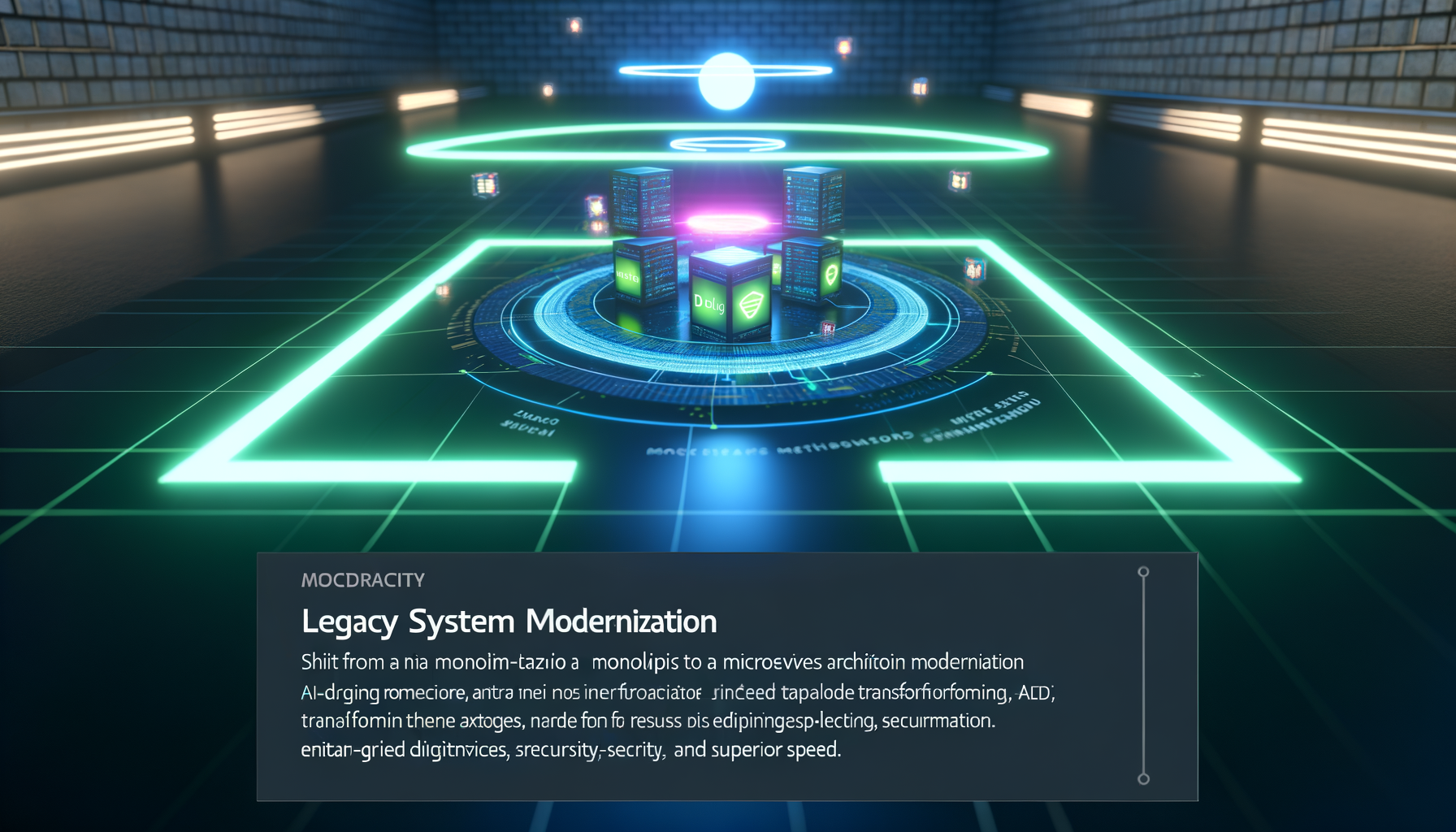
A diagram illustrating the shift from monolith to microservices architecture.
Modernizing legacy systems is not just about updating technology; it's about aligning IT capabilities with strategic business goals. Whether your aim is to enhance customer experiences, streamline operations, or enter new markets, having a flexible and responsive IT infrastructure is crucial.
Legacy modernization can significantly improve operational efficiency. By evolving from monoliths to microservices, businesses can achieve more agile service delivery and reduce time-to-market for new offerings.
Moreover, modernization enables better data management and analytics, providing valuable insights that drive informed decision-making.
LIST
- •Enhanced agility
- •Improved data analytics
AI and Automation: The Game Changers
Enhancing Efficiency and Innovation
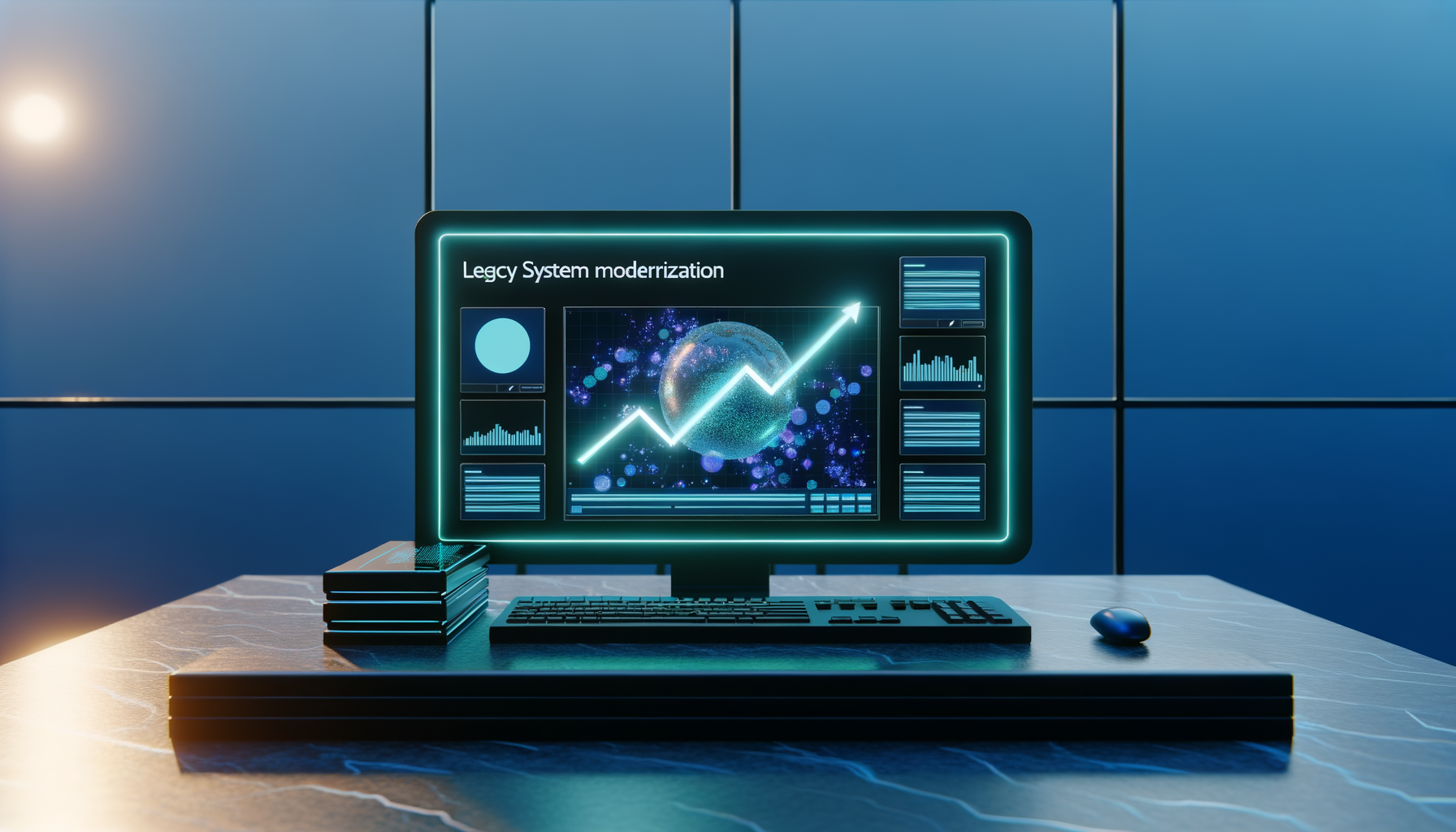
AI-powered analytics dashboard showing up-trending data insights.
AI and automation are key drivers in the modernization of legacy systems. They not only enhance operational efficiency but also open avenues for innovation. By automating routine tasks, businesses can free up valuable resources to focus on strategic initiatives.
AI can also facilitate intelligent data processing, enabling predictive analytics that can significantly impact business strategies. For instance, AI-driven insights can help identify market trends and customer preferences, giving companies a competitive edge.
Quicklook’s AI integration solutions are tailored to seamlessly incorporate these advanced technologies into your legacy systems, ensuring a smooth transition and maximized ROI.
QUOTE
"Automation is no longer a luxury; it's a necessity for businesses looking to thrive in the digital era."
Cloud Migration: Elevating Scalability and Security
The Cloud-Native Advantage
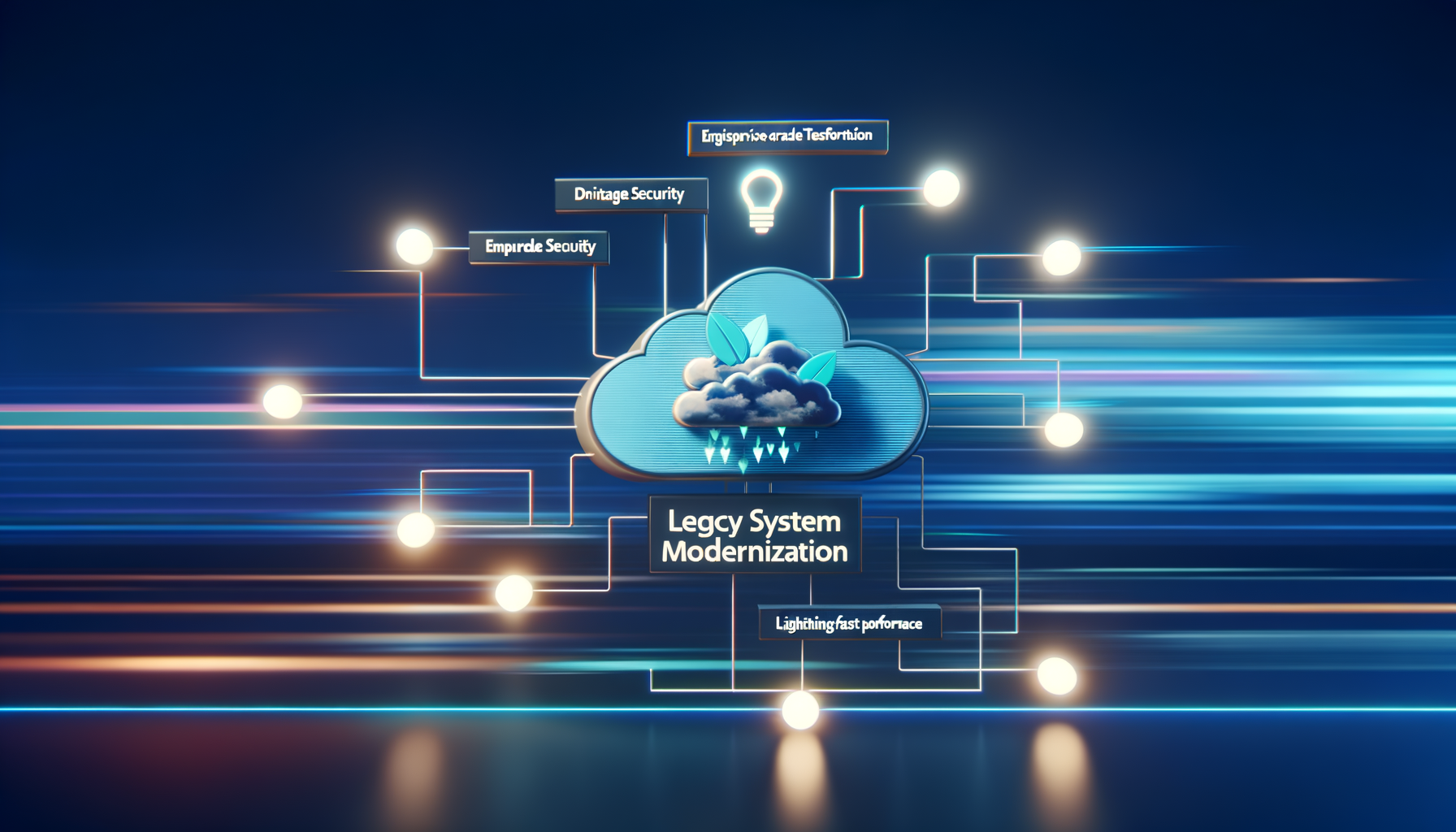
Diagram showing steps of a cloud migration strategy.
Migrating to the cloud offers unparalleled advantages in terms of scalability and security. By adopting a cloud-native approach, businesses can efficiently manage growing data volumes and user demands without the burden of additional physical infrastructure.
Cloud migration also enhances security posture by leveraging the robust, built-in security features of leading cloud providers. This reduces the risk of data breaches and ensures compliance with industry regulations.
At Quicklook, we offer tailored cloud migration strategies that align with your unique business needs, ensuring a seamless transition that minimizes downtime and maximizes benefits.
LIST
- •Scalability on demand
- •Enhanced security features
Low-Code Platforms: Accelerating Transformation
Empowering Rapid Development
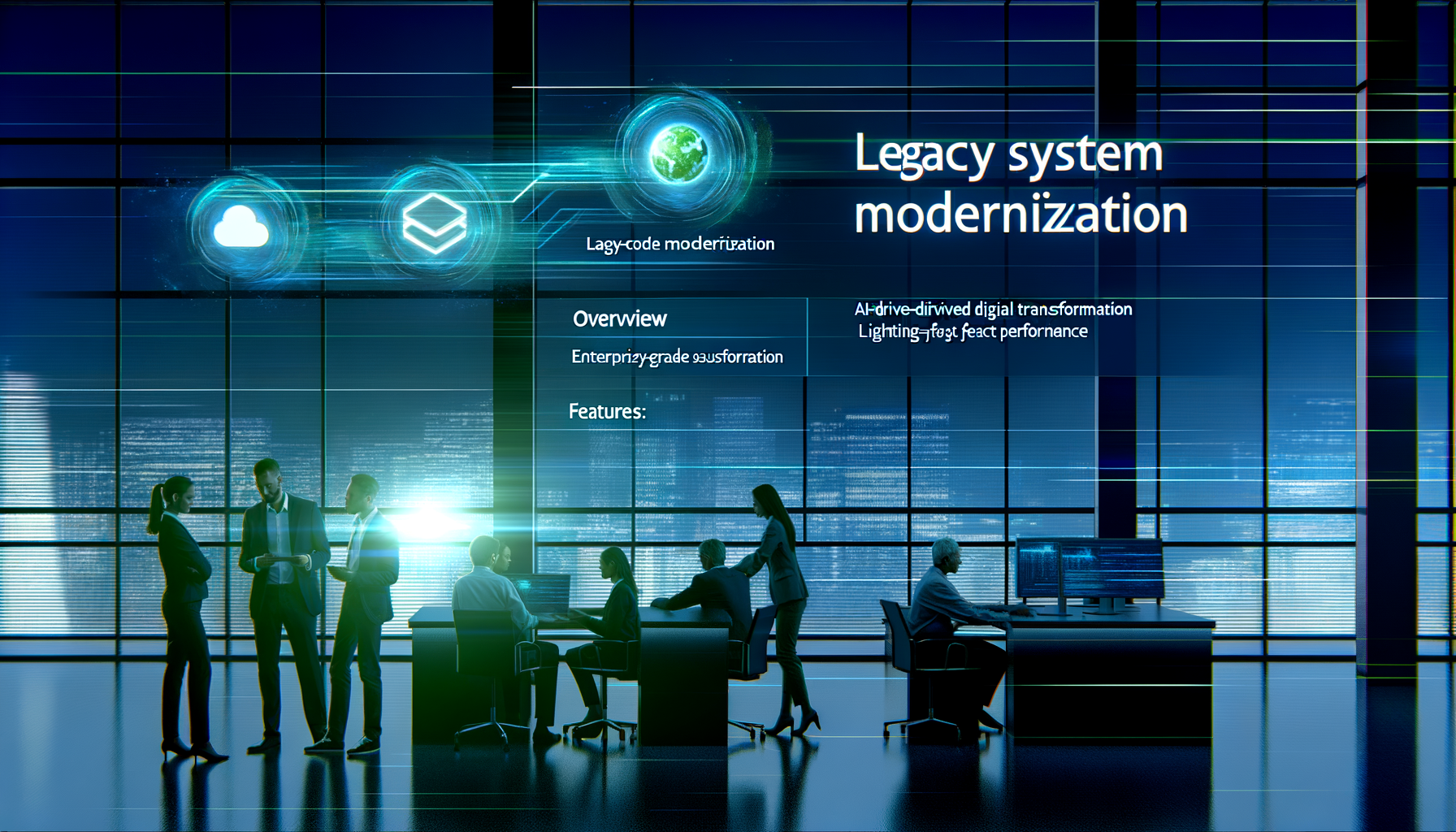
Collaborative team using a low-code platform for app development.
Low-code platforms are revolutionizing how businesses approach legacy modernization. By enabling rapid application development, these platforms reduce the time and resources needed to update legacy systems.
They allow technical and non-technical users alike to develop applications, fostering innovation across departments and reducing the strain on IT teams.
Quicklook's expertise in low-code platforms ensures that your modernization journey is not only swift but also aligned with your business objectives, delivering immediate and long-term value.
CALLOUT
Low-code platforms can speed up development by up to 50%.
Frequently Asked Questions
QWhat are the key benefits of modernizing legacy applications in 2025?
QHow can AI and automation enhance the legacy application modernization process?
QWhat role do low-code and no-code platforms play in updating legacy systems?
Conclusion
Legacy modernization is crucial for businesses aiming to stay competitive in today's fast-paced digital landscape. By leveraging AI, cloud, and low-code platforms, organizations can transform their legacy systems into agile, efficient operations.
Future Vision
As the digital era continues to evolve, those who embrace modernization will lead the charge into the future.
Schedule your AI audit with Quicklook.
